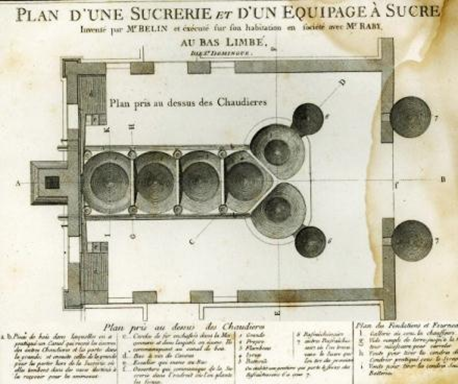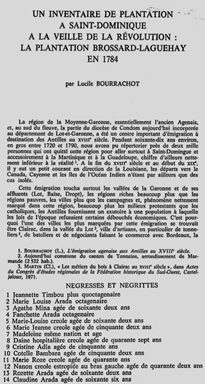 "Sugar and the Plantations" by John D. Garrigus, Ph.D.
"Sugar and the Plantations" by John D. Garrigus, Ph.D.
Garrigus is Associate Professor of History at the University of Texas, Arlington. He is the author of Before Haiti: Race and Citizenship in French Saint Domingue (2006) and co-author of Assumed Identities: The Meanings of Race in the Atlantic World (2010)
The French colonies of Martinique and Guadeloupe were growing sugar by the 1680s, but sugar planting in Saint-Domingue only began to take off after 1700. In this larger territory, the sugar industry quickly reached new heights of production and profitability. Enslaved sugar workers, on the other hand, suffered much higher death rates and lower birthrates. Even more than in the Lesser Antilles, Saint-Domingue’s sugar estates were not tropical farms but manufacturing sites, with many of the characteristics of an industrial operation.
Eighteenth century sugar cane took twelve to eighteenth months to grow and ripen. But all that time and effort could be lost if the planter mismanaged the delicate process of transforming canes into crystals. Plantations had their own mills to crush the sugar juice out of the cane, and these often ran 24 hours a day during harvest. Estates also had their own boiling houses, where workers carefully evaporated the juice in a series of progressively smaller vats, pictured in this architectural drawing from 1784.
After the juice had crystallized it was packed into clay pots and stored for three weeks so the remaining moisture could drain away. Unlike British colonists, who were only allowed to produce brown sugar, after 1763 many of Saint-Domingue’s planters refined their crystals to a golden hue. This required almost twice as much raw cane but brought a much higher price. It also produced more molasses, which Saint-Domingue’s planters sold to merchants from North America, often in violation of French law.
By the 1780s, Saint-Domingue had 793 sugar plantations, each of which contemporaries said required a minimum of 100 enslaved workers. In the 1770s, planters in Saint-Domingue paid slave ship captains 2,000 livres (French pounds) for a single African man; back in France that sum would support a working class family of six for a year, amounting to roughly $25,000 in 2010 terms. The total investment necessary to build, equip and staff a Saint-Domingue sugar plantation, was 700,000 livres, roughly equivalent to $8.75 million in 2010.


